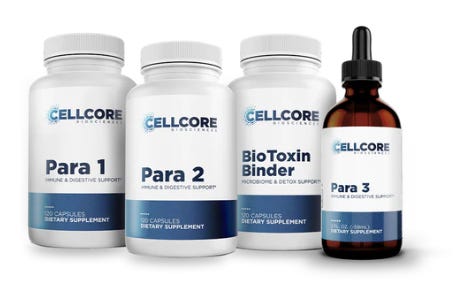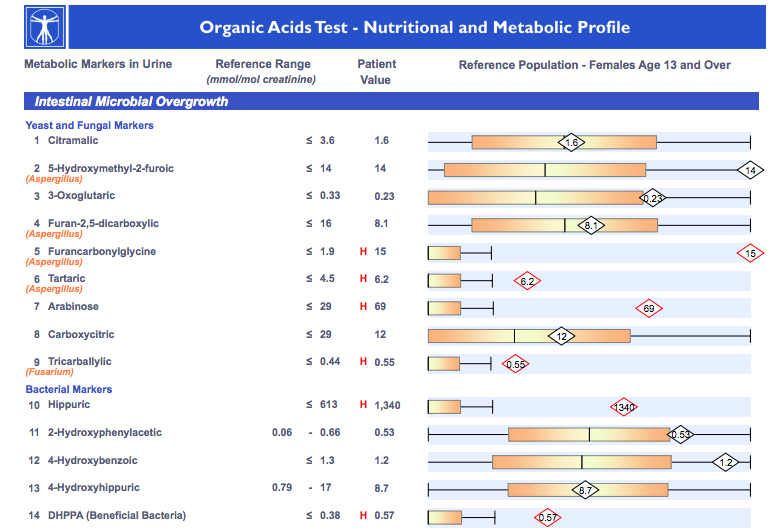A Comprehensive Mold and Mycotoxin Protocol
Let's tackle those mycotoxins!
Embarking on a journey toward optimal health often involves navigating various challenges. For many, the road to well-being is a winding path that requires addressing multiple factors. In my personal story, I triumphed over a parasitic infestation, heavy metal toxicity, EBV, chronic fatigue, hair loss, iron-deficiency anemia and more only to discover the presence of mold-related issues. This narrative sheds light on the interconnectedness of health challenges and the importance of a comprehensive approach.
I want to share my protocol that begins with building a robust immune system, and eradicating parasites and seamlessly transitioning to addressing mold exposure, recognizing that there is a symbiotic relationship between parasites and mold.
Parasite Eradication: Unveiling the First Layer of the Challenge
During my health journey I discovered 6 different parasites, E. coli, Blastocystis hominis, Ascaris lumbricoides, Diphyllobothrium latum (fish tapeworm), and Taenia solium (pork tapeworm). Obtaining a precise diagnosis for these parasites proved to be a decade-long challenge. The intricacies of parasite testing, often yielding false negatives in stool tests, contributed to the prolonged duration required to identify these specific pathogens accurately.
Parasites are a silent menace that often go undetected, wreaking havoc on the body's systems. Parasites not only consume vital nutrients but also release harmful byproducts, such as ammonia, mold, and their own metabolic byproducts setting the stage for a cascade of health issues. Successfully overcoming this initial hurdle involved a targeted approach, including diagnostic testing, herbal interventions, and lifestyle adjustments.
Opening Drainage Pathways: A Pivotal Step in Parasite Eradication
Understanding the importance of optimal drainage pathways, I incorporated the Cellcore Jumpstart Kit (register with FREE code FM2ZJhN9) into my protocol. This comprehensive kit, including KL Support, BC-ATP, Biotoxin Binder, and CT-Minerals, serves as an effective beginning to ensure drainage pathways are open and functional. By prioritizing drainage, I created an environment that facilitated the removal of toxins and byproducts, laying the foundation for a successful parasite protocol.
Cellcore's Full Moon Protocol: A Strategic Approach to Parasite Eradication
Building on the foundation of open drainage pathways, I then started Cellcore's Full Moon Protocol. This targeted protocol is designed to address parasites at various stages of their life cycle, ensuring a thorough and effective approach. As a firm advocate for holistic health, I now recommend to clients the importance of ensuring their drainage pathways are open before embarking on a Full Moon Parasite Protocol.
Unraveling the Parasite-Mold Connection: A Complex Interplay
Interestingly, the story doesn't end with parasite eradication. Parasites consume mold as part of their life cycle, and when they succumb to treatment, they release mold byproducts into the system. This revelation underscores the intricate relationship between parasites and mold and highlights the need for a two-fold approach: addressing both the parasites themselves and the potential mold-related repercussions.
“Parasites and mold can both upregulate T helper 2 cells (Th2 cells) which assist in releasing pro-inflammatory cytokines, causing systemic inflammation and creating “random” symptoms. Due to the inflammation that this causes, this also enables dormant bacterial and viral infections to take over since the immune system’s defenses are lowered.” Dr. Jaban
Upon delving deeper into my health journey, I discovered elevated levels of four key mycotoxins – Ochratoxin A, Citrinin, Gliotoxin, and MPA. These mycotoxins, produced by molds, pose significant health risks, affecting everything from immune function to neurological well-being. Recognizing the presence of these mycotoxins became a pivotal moment in my quest for optimal health, prompting a more targeted and nuanced approach to mold exposure.
My Mosaics Diagnostics Mycotoxin report taken 10/27/2023:
5. Mold Visual Acuity Test by Dr. Shoemaker
Dr. Ritchie Shoemaker, a pioneer in the field of mold-related illness, has developed a Mold Visual Acuity Test. It involves viewing a chart of letters and numbers, with improvements or deteriorations indicating potential mold exposure. Taking this test provides an initial insight into the presence of mold-related health issues.
“Visual contrast sensitivity testing measures your ability to see details at low contrast levels and is often used as a nonspecific test of neurological function. Similar in form to a standard audiometry hearing test, a VCS test generally involves the presentation of a series of images of decreasing contrast to the test subject and the recording of the contrast levels where patterns, shapes, or objects can or cannot be identified. The results of the test can then be used as an aid in the diagnosis of visual system dysfunction.” Dr. Shoemaker
This visual acuity test, conducted on 11/14/2023, marks my initial attempt, unfortunately resulting in a FAILURE:
This marks my second visual acuity test, conducted two weeks into initiating my mold protocol. Although I still did not pass the test, noteworthy progress is evident in columns C, D, and E, signifying a positive shift since the beginning of my mold protocol.
ERMI Testing for Home, Office, and Dorms
The Environmental Relative Moldiness Index (ERMI) test is a powerful tool for assessing the mold burden in indoor spaces. This DNA-based test provides a comprehensive analysis of various mold species in a given environment. Testing your home, office, or college dorm with ERMI can identify problematic areas and guide targeted remediation efforts.
Metabolic Panels, OATS, and Mycotoxin Testing
Beyond visual and environmental assessments, understanding the impact of mold on your body is crucial. Basic Metabolic Panels offer insights into your overall health, while an Organic Acid Test (OATS) provides a deeper look into metabolic processes. Combining these with mycotoxin testing from reputable laboratories like Mosaic Labs allows for a more comprehensive understanding of how mold exposure may be affecting your health.
Organic Acid Test (OATS): Analyze organic acids in urine to assess metabolic function and identify potential abnormalities related to mold exposure.
The Mosaics Diagnostics OATS test identifies:
Intestinal Microbial Overgrowth markers evaluate for candida activity, clostridia bacteria toxins, potential mold exposure, and imbalance in the gut microflora.
Oxalate Metabolites provide insight into oxalate levels being generated by organisms within the system or via dietary contributions.
Glycolytic Cycle Metabolites and Mitochondrial Markers (Krebs Cycle and Amino Acid Metabolites) evaluate for metabolic efficiency (e.g., use of glucose and amino acids for energy generation) and mitochondrial dysfunction.
Neurotransmitter Metabolites evaluate for phenylalanine, tyrosine and tryptophan metabolism which are linked to neurotransmitter status and quinolinic acid production.
Pyrimidine Metabolites & Ketone and Fatty Acid Oxidation markers give insight into folate status and cellular turnover, as well as mitochondrial utilization of fatty acids for energy production.
Nutritional Markers provide insight into the sufficiency of essential vitamins, antioxidants, and metabolic pathway co-factors.
Indicators of Detoxification assess for the presence of oxidative stress via markers of glutathione sufficiency and methylation versus transsulfuration function.
Amino Acid Metabolites may suggest functional nutrient need or be reflective of genetic metabolic dysfunction if a consistently, persistently elevated level of a particular analyte is noted.
The Mineral Metabolism marker provides insight into dietary intake of phosphate and can give insights into Vitamin D levels.
Mycotoxin Testing by Mosaic Labs: Detect the presence of mycotoxins in the body, providing a direct link between mold exposure and its impact on your health.
Helpful Resources:
Break The Mold: Julie Crista
In my next blog post, I will unveil additional resources and delve into further mold remediation strategies. Stay tuned for valuable insights on addressing and mitigating mold-related challenges.
References:
Bennett, J W, and M Klich. “Mycotoxins.” Clinical microbiology reviews vol. 16,3 (2003): 497-516. doi:10.1128/CMR.16.3.497-516.2003
Rea, William J et al. “The treatment of patients with mycotoxin-induced disease.” Toxicology and industrial health vol. 25,9-10 (2009): 711-4. doi:10.1177/0748233709348281
Kraft S, Buchenauer L, Polte T. Mold, Mycotoxins and a Dysregulated Immune System: A Combination of Concern? Int J Mol Sci. 2021 Nov 12;22(22):12269. doi: 10.3390/ijms222212269. PMID: 34830149; PMCID: PMC8619365.
Sun Y, Song Y, Long M, Yang S. Immunotoxicity of Three Environmental Mycotoxins and Their Risks of Increasing Pathogen Infections. Toxins (Basel). 2023 Mar 2;15(3):187. doi: 10.3390/toxins15030187. PMID: 36977078; PMCID: PMC10054902.










